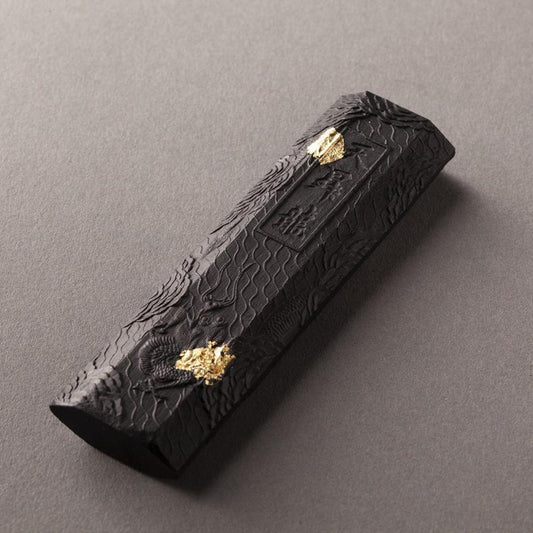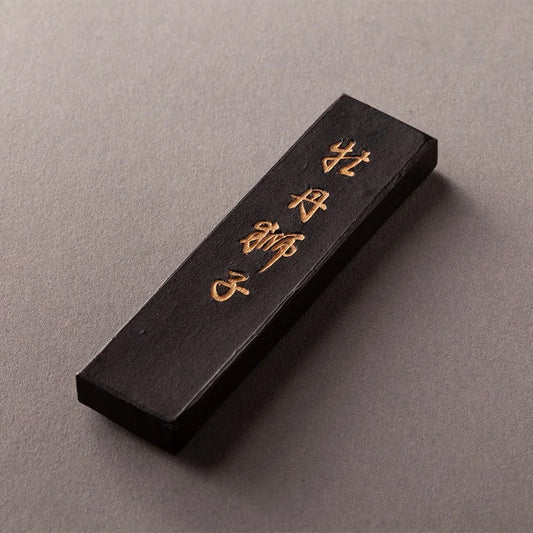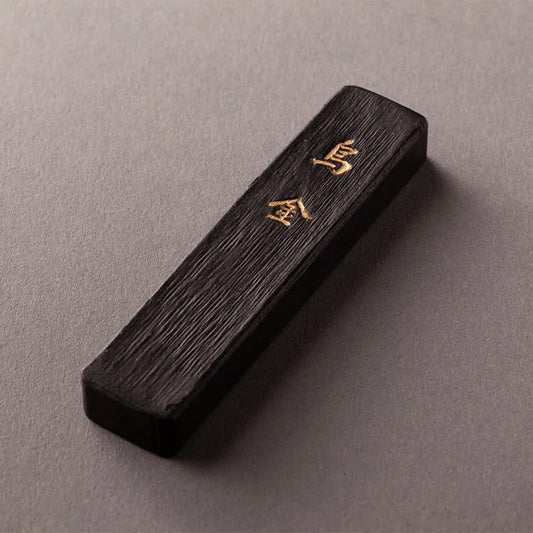rimpamura
【奈良墨:錦光園】KOKI
【奈良墨:錦光園】KOKI
Nara Sumi, known for its purity with almost no impurities, fine and uniform particles, and a deep glossy color, boasts enduring popularity due to its beautiful ink color and the pleasant feel when writing or drawing.
It's noteworthy that over 90% of the solid ink used in Japan is produced in Nara Prefecture, contributing to its well-deserved reputation.
When ground thick, its sumi black is deep and rich. When ground thin, it produces a slightly aged light sumi black, showcasing a well-balanced product that exhibits qualities such as seepage, contrast, and baseline. With a unique design featuring chrysanthemum patterns covering all sides, it has become the most popular product from KINKOEN."
<product details>
Rapeseed oil-soot Sumi ink(about 45g)
Verfügbarkeit für Abholungen konnte nicht geladen werden
Share



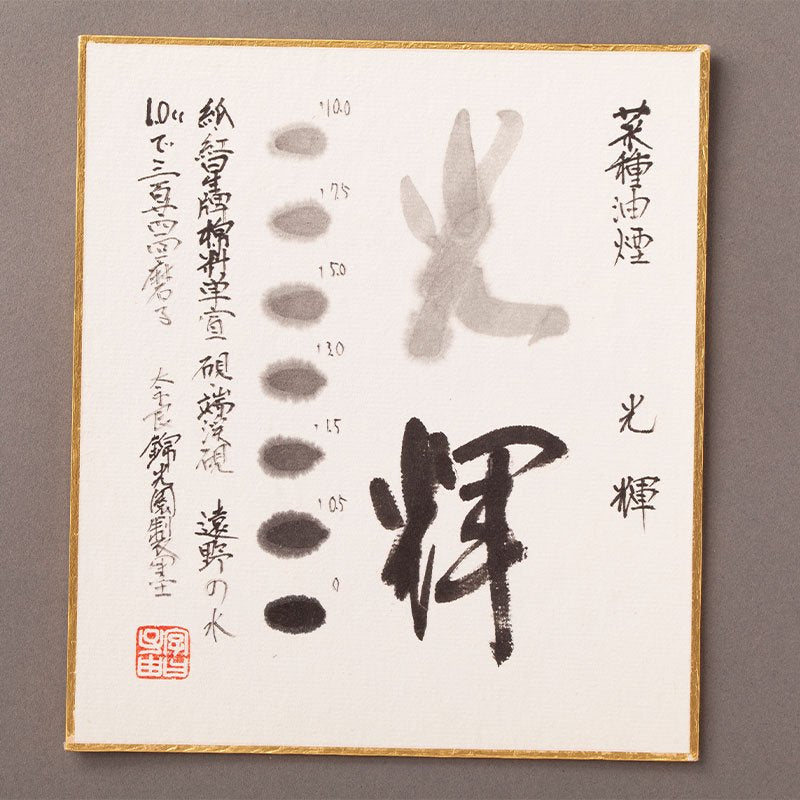
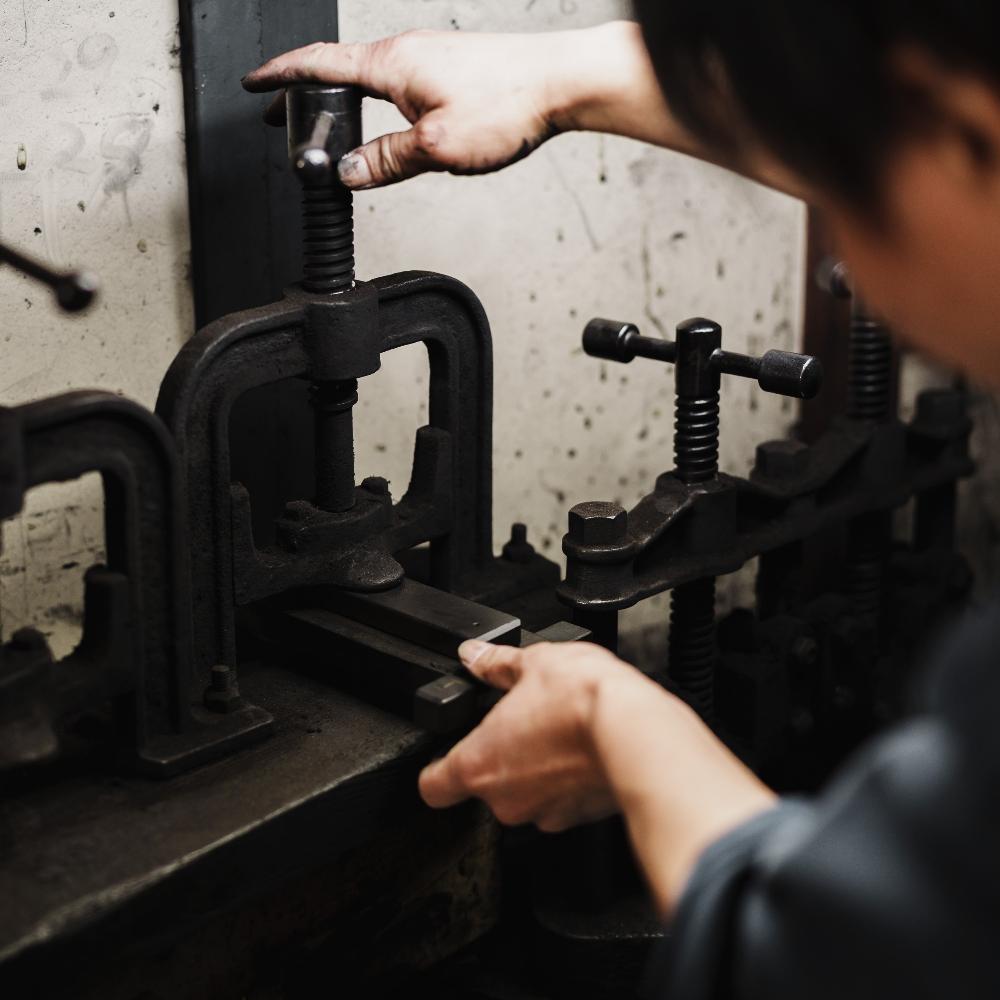
奈良墨 墨匠 Atsushi Nagano
Atsushi Nagano, a prominent craftsman with over 6,000 Twitter followers, is at the forefront of the industry with his innovative projects.
As the 7th generation of KINKOEN, Atsushi Nagano upholds the tradition of employing traditional Nara techniques to craft 'Nara Sumi Ink.'
He has spearheaded various initiatives, including the development of Sumi ink that allows enthusiasts to appreciate its allure beyond mere 'writing,' encompassing aspects like 'seeing' and 'scent.'
Furthermore, he has been actively engaged in a collaborative project with a local elementary school, envisioning the future of Nara's traditional crafts for the next 50 years.
As of September 2023, he is a prominent shokunin with over 6,000 Twitter followers, leading the industry with his innovative projects.
Sumi ink stick from KINKOEN
-
【奈良墨: 錦光園】 Essence of Soot, Three Varieties Set
Normaler Preis $151.00Normaler PreisStückpreis / pro -
【奈良墨: 錦光園】 TENSHO RYU (Dragon Climbing to Heavens)
Normaler Preis $86.00Normaler PreisStückpreis / pro -
【奈良墨: 錦光園】 The Shoen Trilogy
Normaler Preis $287.00Normaler PreisStückpreis / pro -
【奈良墨: 錦光園】BOTANJISHI
Normaler Preis $53.00Normaler PreisStückpreis / pro -
【奈良墨: 錦光園】Kaori Sumi "ASUKA" (Kaori means scent in Japanese)
Normaler Preis Von $38.00Normaler PreisStückpreis / pro -
【奈良墨: 錦光園】KYUSHIEN(Garden of Nine children)
Normaler Preis $172.00Normaler PreisStückpreis / pro -
【奈良墨: 錦光園】OHAJIKI Sumi
Normaler Preis $151.00Normaler PreisStückpreis / pro -
【奈良墨: 錦光園】Set of Three from Shaped Like Japanese Sweets in a paulownia wood box.
Normaler Preis $136.00Normaler PreisStückpreis / pro -
【奈良墨: 錦光園】SHIEN
Normaler Preis $22.00Normaler PreisStückpreis / pro -
【奈良墨: 錦光園】The Shokunin's Palette: Three Hues of Nara Sum
Normaler Preis $115.00Normaler PreisStückpreis / pro -
【奈良墨: 錦光園】UKIN
Normaler Preis $59.00Normaler PreisStückpreis / pro -
【奈良墨:錦光園】KOKI
Normaler Preis $37.00Normaler PreisStückpreis / pro







